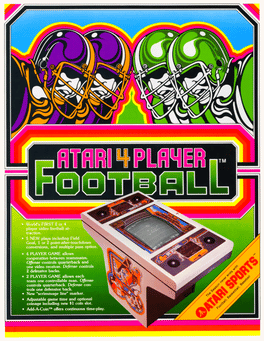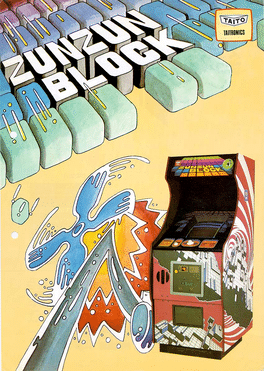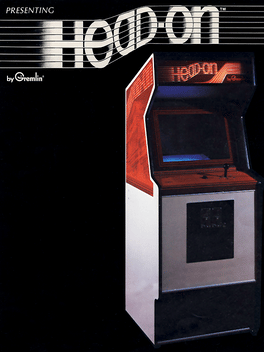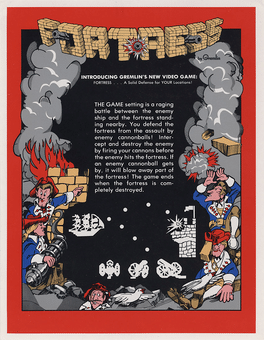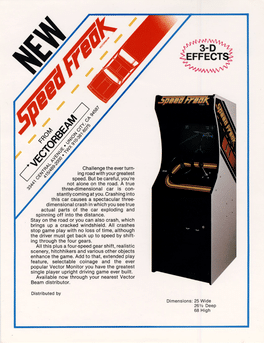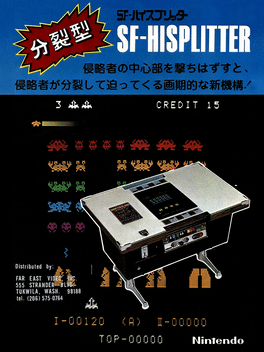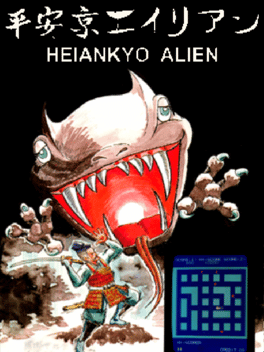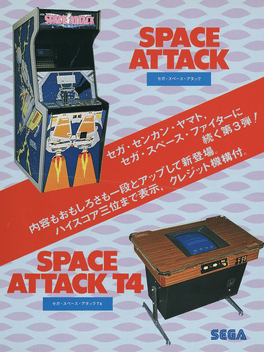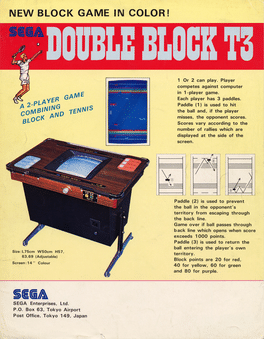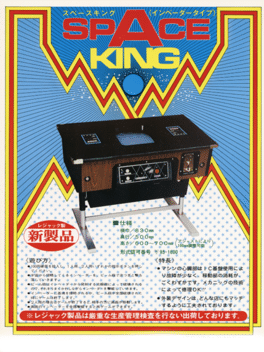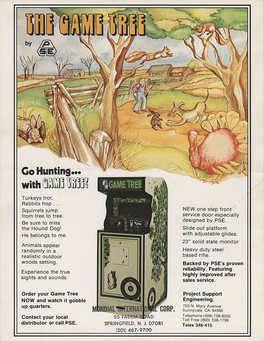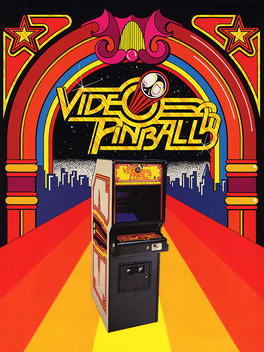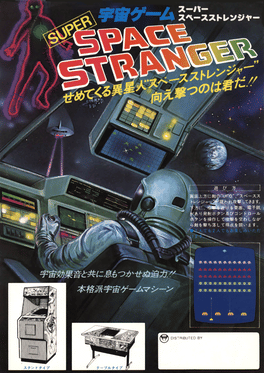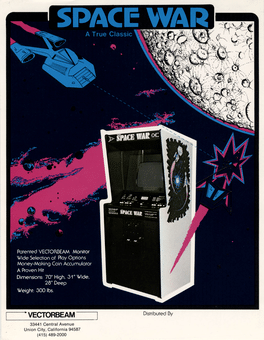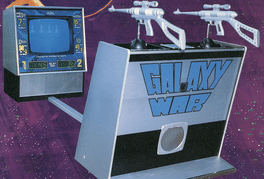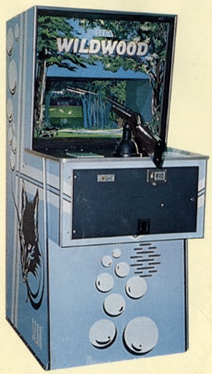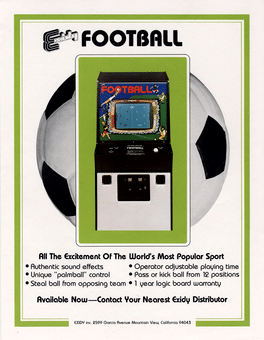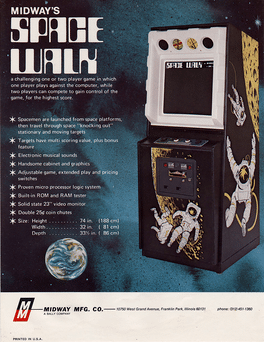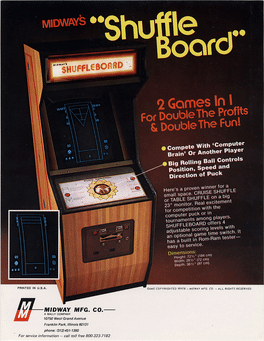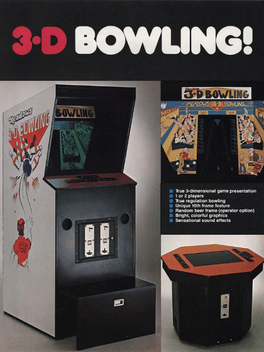New Arcade Games - Page 134
-
ZunZun Block
1979
ZunZun Block
1979
ZunZun Block is the third game in Taito's Block series. Again, the gameplay is similiar to Breakout's ball-and-paddle block breaking. -
Head On
1979
Head On
1979
Head On is an arcade game developed in 1979 by Sega. In this game, players control their cars through the maze where the goal is to collect the dots while avoiding collisions with the computer-controlled car that is also collecting dots. It was an early maze game revolved around collecting dots and is considered a precursor to Namco's 1980 hit Pac-Man. -
Fortress
1979
-
Speed Freak
1979
Speed Freak
1979
Speed Freak is a monochrome vector arcade game created by Vectorbeam in 1979. It is a behind-the-wheel driving simulation where the driver speeds down the computer generated road past other cars, hitchikers, trees, cows and cacti. Occasionally a plane will fly overhead towards the screen. One must avoid crashing into these objects and complete the race in the alloted time. The player can crash as many times as he wants before the time runs out and players were treated to two different crash animations. The first was a simple cracked windshield effect, the second was a crash where the car explodes into car parts that fly through the air. -
SF-HiSplitter
1979
SF-HiSplitter
1979
A special version of Space Fever called SF-Hisplitter was released the same year and features aliens that are double the width of the standard variety, which can either be destroyed completely or split into two smaller aliens depending on where they are shot. This version is in color, and the shelter blocks are visually distinct from the monochrome version. -
Heiankyo Alien
1979
Heiankyo Alien
1979
The player controls a Heian period police officer who must defend the capital city from an alien invasion by digging holes in the ground and filling them back up after an alien falls inside. The player scores points for every alien trapped, and the quicker the hole is filled up after the alien falls in, the higher the number of points are scored. The aliens increase in number as the levels progress, and they can escape from holes after a certain period of time elapses or if another alien passes above their hole. The player loses if he comes in contact with an alien. There is a time limit for each level, and the number of aliens increases drastically when this limit is reached, essentially preventing the player from completing the level. -
Space Attack
1979
Space Attack
1979
Space Attack is an arcade shooting game, released by Sega for VIC Dual hardware in 1979. In the US it is thought to have been renamed Super Space Attack - whether there are in fact two separate games is currently unknown, but the two are extremely similar and "Super" is often dropped in internal Super Space Attack documents. It's a Space Invaders clone and is almost identical to Taito's classic. It is completely identical to another VIC Dual Space Invaders clone, Alpha Fighter, sharing full color graphics and a "bonus" round (in which the saucer briefly descends from the top of the screen after clearing the rest of usual set of invaders). Space Attack has a different set of graphics to Alpha Fighter, however. Similar to versions of Space Invaders, the upright cabinets for Space Attack use a mirror to project the image onto a textured surface (in this case, a starfield), giving the illusion that there is a background while playing. -
Double Block
1979
-
Space King
1979
Space King
1979
Space King is an early arcade game from Konami. It is the first non-Breakout clone the company produced, instead being a clone of Taito's Space Invaders. -
Game Tree
1978
-
Video Pinball
1978
Video Pinball
1978
It's the world's first video game to simulate the action and color of pinball... in a compact cabinet size. Through the magic of mirrors, video images of the ball, flippers and drop targets are superimposed on an actual 3-dimensional blacklight playfield. -
Space Stranger
1978
Space Stranger
1978
A modification of Space Invaders, by Yachiyo Electronics, Ltd. there is name entry after the first wave of aliens, the invaders change shapes and the spaceship has different design. The game also has different colors than the original Space Invaders. -
Space War
1978
Space War
1978
Space War is the first game released by Vectorbeam after its founders left Cinematronics. It is essentially a very close version of Cinematronic's Space Wars, which had in turn been brought to Cinematronics by Vectorbeam founder Larry Rosenthal as a prototype inspired by the 1962 PDP-1 game Spacewar. -
Galaxy War
1978
Galaxy War
1978
Galaxy War is a discrete logic arcade game released by Sega in 1978. It is a shooting game which is very similar to Bullet Mark—four types of targets, such as spacecraft and disks, are aimed at by one or two players. There is a bullet indicator and you can fire the trigger while squeezing the trigger. -
Wildwood
1978
-
Football
1978
-
Space Walk
1978
Space Walk
1978
A clone of Circus, in this variant it is not clowns but astronauts bouncing on a see-saw in order to collect items up in the air. -
Shuffleboard
1978
-
3-D Bowling
1978
